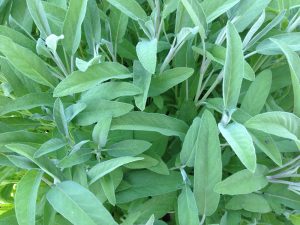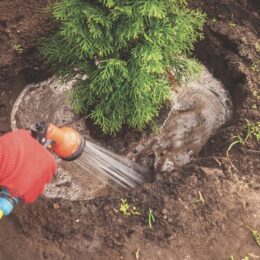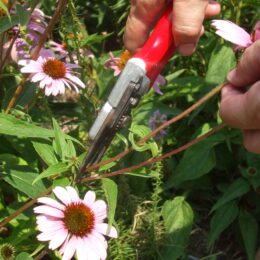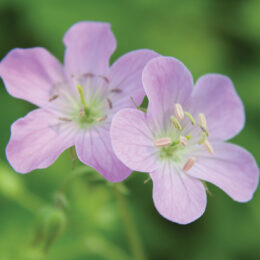By Rosie Lerner

Photo by B. Rosie Lerner
Holiday dinners filled with the fragrance of sage-dusted turkey and dressing may be an American tradition, so it may surprise you to know that the sage plant, Salvia officinalis, is native to the Mediterranean.
Sage is actually a diverse group of herbs belonging to the genus Salvia, many species of which are well adapted to the home garden. Common sage, S. officinalis, is grown for its leathery gray-green foliage on 1½-2 foot tall stems that become slightly woody with age. Frequent cutting of the stems will encourage stronger new growth to emerge. Plants can be propagated by division, stem cuttings or seed. There are a number of cultivars available in variegated foliage colors: “Berggarten” with its large, dusty blue-green leaves, “Tricolor” with red, white and green leaves, “Purpurea” with purple leaves, and “Icterina” with yellow-edged green leaves.
Sage performs best in full sun with well-drained soil. Garden sage will grow easily from seed, though harvest will be small the first year. After its second growing season, sage should be trimmed back in the spring to avoid the center of the plant becoming semi woody.
If left to flower, sage will produce blue blooms that attract butterflies, but this leaves less oil content, translating to reduced flavor in the leaves. Sage plants should be able to provide a dependable supply of fresh-cut leaves for three to five years, after which the plants should be replaced or divided to rejuvenate.
Rosie Lerner is the Purdue Extension consumer horticulturist and a consumer of Tipmont REMC. Have a question about gardening? Use the form to send it to us. Or, questions about gardening issues may be sent to: “Ask Rosie,” Electric Consumer, P.O. Box 24517, Indianapolis, IN 46224, or ec@ElectricConsumer.org.



